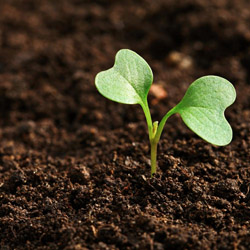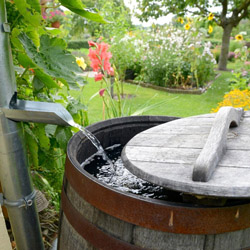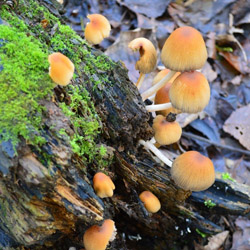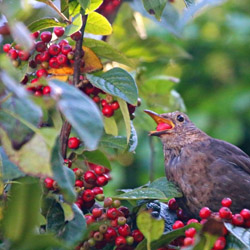Rising tides, severe storms, raging wildfires, widespread flooding, changing habitats – climate change is having undeniable dire consequences all around the globe. Fortunately, there are many easy ways to combat climate change right in your own garden, no matter what type of gardening you enjoy or how large or small your garden may be.
12 Gardening Strategies to Combat Climate Change
All gardener can take steps to combat climate change, and the with each small steps the gardener takes, the bigger the overall impact sustainable gardening can have locally, regionally, and globally. The best ways to combat climate change with any garden include…
- Growing Edibles
Growing fruits and vegetables will not only lower grocery bills, but will also lower emissions, since there will be no shipping to bring food from the garden to the table. Garden-grown goodies also don’t need plastic packaging, lessening waste that ends up in overcrowded landfills. Check with your local garden center for the best fruits and vegetables for your soil type and garden conditions and investigate both seeds and seedlings for the greatest variety of options. - Rotating Crops
Changing which plant families you grow in a particular spot of the garden each year is called crop rotation. Rotating your crops will help prevent nutrient depletion in the soil because plant families vary in which nutrients they predominantly use. - Composting
Compost is the ultimate in easy recycling, and many kitchen and household scraps can add nourishment to rich compost. If you can’t manage a large compost pile, try a smaller compost bin or tumbler for easy composting that will be just as enriching to any garden, flowerbed, or landscape. Composting will also help you to be sure of exactly what nourishment your garden receives, so you know exactly how your edibles have been treated. - Attracting Pollinators
A wide variety of natural pollinators can benefit your garden and increase floral blooming and edible yields. Hummingbirds, butterflies, bats, moths, bees, and other critters all help pollinate the garden, and adding native plants and flowers will bring these helpers to the garden. Adding a bee hotel, bat house, hummingbird feeder, butterfly puddle, or bird bath to the yard are other ways to encourage pollinators to visit so you can take advantage of their assistance. - Nurturing Wildlife
In addition to pollinators, other local wildlife can benefit the garden. Visitors such as songbirds, toads, salamanders, turtles, snakes, and opossums all eat insects that might otherwise damage crops and plants. Creating a rock pile or brush pile, or adding a toad house, bird house, or other shelter to the garden or landscape will welcome these diverse guests and encourage them to take up residence where they can be helpful. - Mulching
A thick layer of mulch on top of garden soil or flowerbeds will not only control weeds and moderate soil temperature but will also help minimize water evaporation and control erosion. Choose organic mulches such as wood chips or nuggets to improve soil health, or opt for inorganic mulches such as river rock or gravel for long-lasting options. - Installing Rain Barrels
Managing water use is a simple way to combat climate change and installing rain barrels is a great step. Instead of letting excess water disappear as runoff, a rain barrel stores water perfect for watering containers, saplings, gardens, flowerbeds, and houseplants. If a rain barrel isn’t possible, manage water by adjusting drainage in the yard, ensuring gutters and downspouts are clear, and turning off automatic irrigation when Mother Nature lends a hand to a thirsty garden. - Adding Livestock
While wildlife can be great garden helpers, livestock can be even more beneficial. A goat is an excellent weed-control officer, while chickens, ducks, and geese are perfect for pest control as they nibble their way through a garden’s insect population. A small shed barn or chicken coop can be an attractive focal point in a garden, and the milk and eggs that the livestock provides can provide additional help with budget-friendly grocery bills that don’t require shipping or packaging. - Using Timers
Opting for timers for automated gardening tasks will help reduce energy and resource use. Timers can be added to sprinkler and other watering systems so water is not wasted, and timers can also be part of automatic lights to adjust as daylight levels change in different seasons. Programmable timers or those with automatic sensors are the best options for the most efficient energy and resource use. - Avoiding Gas-Powered Tools
Gas-powered tools not only use fossil fuels, but they can be terribly inefficient and release many toxic gasses into the atmosphere – key components in driving climate change. Instead, opt for classic hand tools for garden chores, and not only will you help combat climate change, but you will benefit from the extra exercise. For better comfort, choose ergonomic tool designs and keep tools in good condition with regular sharpening, lubrication, and other maintenance. - Planting Trees
Trees are the most efficient plants at removing carbon dioxide from the air, and adding just 1-2 trees to your landscape can combat climate change, provide shade, serve as a windbreak, shelter wildlife, and more. When positioned over a corner of the garden, trees can create microclimates to accommodate a more diverse array of edibles, and trees can be beautiful focal points for a decorative landscape as well. - Enjoying Container Plants
Don’t miss the benefits of containers if you want to plan your gardening to fight climate change. Containers add growing space to patios, porches, decks, walkways, driveways, steps, and balconies, and can be beautiful accents for any location. Indoor containers can be ideal for growing houseplants or a kitchen herb garden and will help freshen the indoor air as well.
The more steps you take with responsible gardening to combat climate change, the more impactful your garden can be and the more benefits you will notice to your garden, your landscape, and your well-being.












